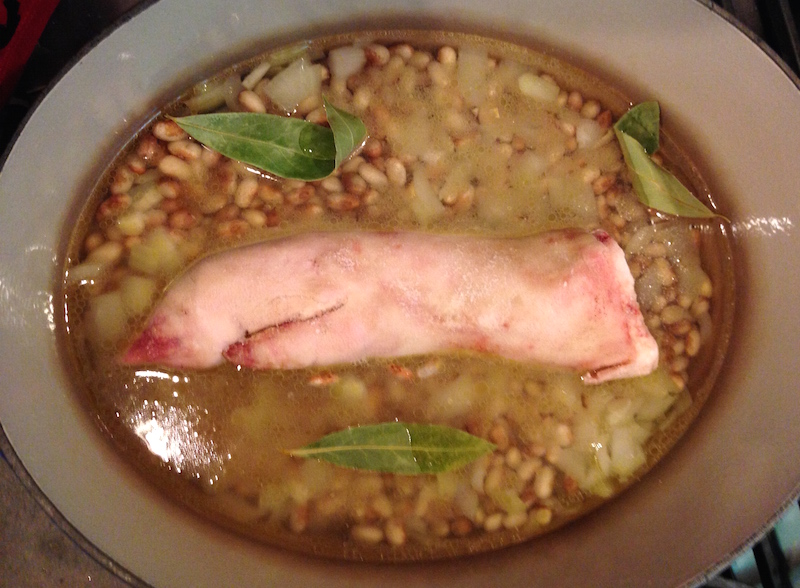
Braising Weather: A Pot of Beans
It's officially fall. The ash trees surrounding our house are turning golden, coloring the light that spills in the kitchen windows. The leaves that have fallen are dry and crispy, crunching under the feet of the neighborhood children walking to school. The urge to kick through the drifts of leaves on the parking strip is almost impossible to resist, and I can hear that most autumnal of sounds as the kids (and sometimes their parents) succumb to their siren song.
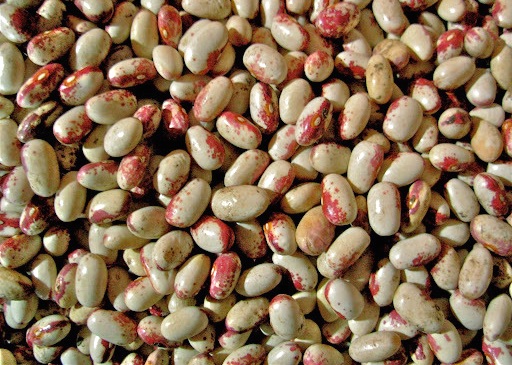 Nighttime temperatures are getting down into the 40s, requiring the addition of thick comforters to the beds, and mornings are brisk, with just enough of a chill to require pulling on a fleece jacket to walk the dogs first thing. The days warm up to the 70s by noon, and a glass of wine on the porch of an evening as the sun sets isn't out of the question just yet, warmth-wise.
Nighttime temperatures are getting down into the 40s, requiring the addition of thick comforters to the beds, and mornings are brisk, with just enough of a chill to require pulling on a fleece jacket to walk the dogs first thing. The days warm up to the 70s by noon, and a glass of wine on the porch of an evening as the sun sets isn't out of the question just yet, warmth-wise.
This is what my parents used to call nigh-perfect Indian summer weather in the Northwest, though I'm beginning to think of it more and more as the onset of braising weather, time to pull out the Dutch oven for the season of low and slow-cooked meats and vegetables.
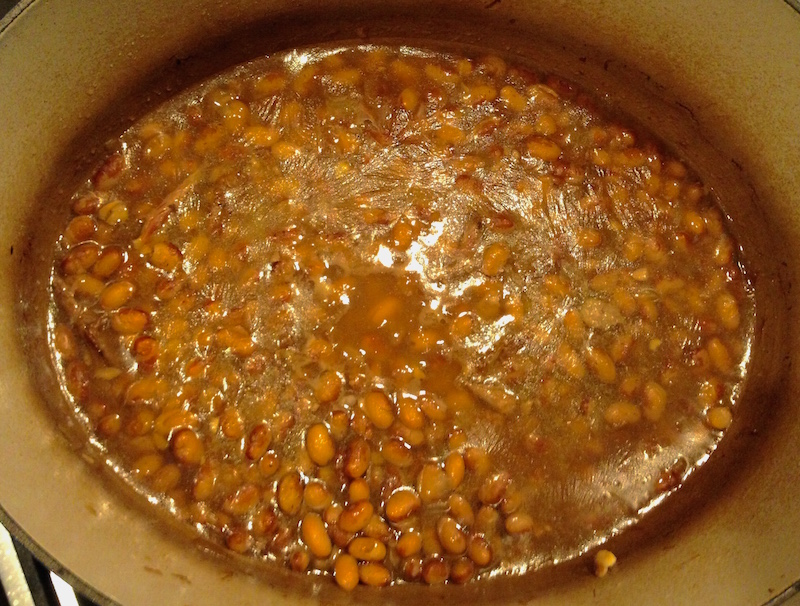 This year's crop of dried beans have begun showing up at the farmers' markets, and I was recently gifted some Rockwell beans from Willowood Farm on Washington's Whidbey Island. This variety was originally grown by an island pioneer, Elisha Rockwell, in the late 1800s, and it was brought back into production recently by farmer Georgie Smith when she took over the land her family had been farming on Ebey's Prairie since the 1890s.
This year's crop of dried beans have begun showing up at the farmers' markets, and I was recently gifted some Rockwell beans from Willowood Farm on Washington's Whidbey Island. This variety was originally grown by an island pioneer, Elisha Rockwell, in the late 1800s, and it was brought back into production recently by farmer Georgie Smith when she took over the land her family had been farming on Ebey's Prairie since the 1890s.
Beans don't need much besides water, onions and garlic to make a mighty tasty main course, served with a hunk of hearty bread and maybe a drizzle of olive oil, but I happened to have a pig trotter (top photo) from the Square Peg Farm pig I'd butchered last winter. Beans and pork are a natural pairing, and the fattier the cut of pig the better. Trotters are almost all fat, and over several hours it gave a porky unctuousness to the pot. A half pound of bacon works well, too, and can be chopped or shredded before or after braising. Even a pound of pork shoulder will do its work on the beans, and can be shredded afterwards to make a beany, porky chili.
Regardless of how you decide to cook them, grab a few different kinds of beans from your local farmers' market and take them for a spin in a pot. I guarantee you'll find one (or more) you'll love, not to mention they'll warm up your family's bellies on these crisp fall nights.
Basic Braised Beans
1 lb. dried beans
3 Tbsp. olive oil
1 onion, chopped roughly
3 cloves garlic, chopped fine
Water
1 Tbsp. salt, plus more to taste
Optional:
3 bay leaves
Pork (pig trotter, 1/2 lb. bacon, 1 lb. pork shoulder)
Depending on the type of bean, you may need to soak them overnight in water (cover by 2"). Check with the farmer or follow directions if they're packaged. Drain and rinse prior to cooking.
Preheat oven to 300°.
On top of stove over medium heat, add oil to pot and heat until it shimmers. Add onion and sauté until tender, then add garlic, sautéing briefly until it's fragrant but not browned. Add drained beans and cover with fresh water by 1". Add salt and stir briefly. Add bay leaves and pork if using.
When it comes to a simmer, cover the pot and put it in the oven for at least four hours or until beans are tender and meat (if used) is falling apart. Check occasionally and add water to cover if the beans have absorbed it all (the amount of water needed will vary with the type of beans and if they have been presoaked). If meat has been used, remove it to a cutting board and chop or shred it, then add it back to the beans.
This can also be done on top of the stove. Simply keep the beans on a low simmer, covered, and check occasionally to make sure all the liquid hasn't absorbed.
More bean recipes: Baked Beans Italian Style, Backyard Barbecue Beans, Mexican-Style Black Bean and Greens Soup.

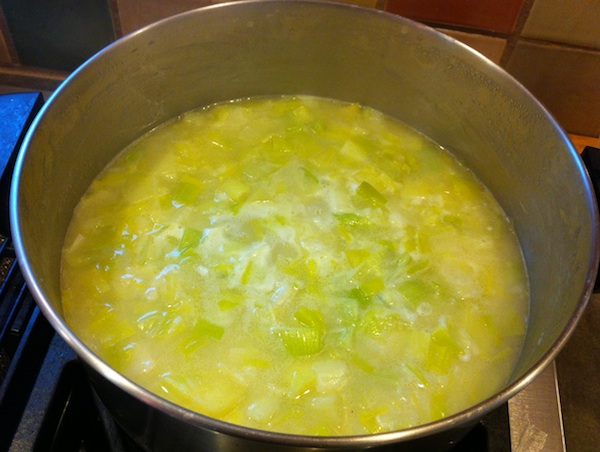 One of the great things about these days at the farm, aside from getting to wear my boots if outside work is required, is sitting down at the table for a big lunch of soup or stew, a hefty loaf of bread and a nice chunk of cheese. On this day, a bit before lunchtime, Carol asked me to pull a big pot out of the fridge that contained braised leeks and potatoes in a white-ish liquid.
One of the great things about these days at the farm, aside from getting to wear my boots if outside work is required, is sitting down at the table for a big lunch of soup or stew, a hefty loaf of bread and a nice chunk of cheese. On this day, a bit before lunchtime, Carol asked me to pull a big pot out of the fridge that contained braised leeks and potatoes in a white-ish liquid.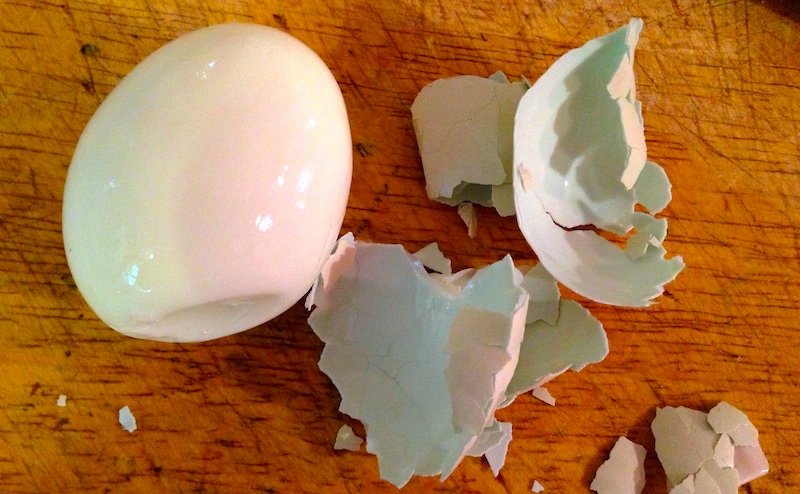
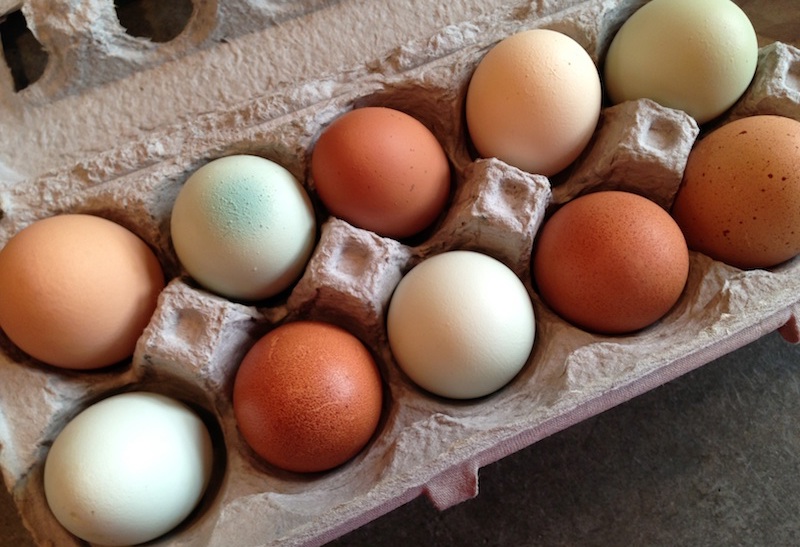
 The problem comes when I need to hard-boil them for potato salad or, worst, for
The problem comes when I need to hard-boil them for potato salad or, worst, for 
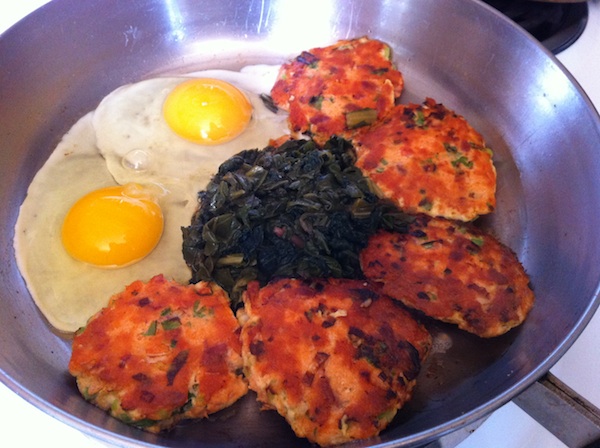
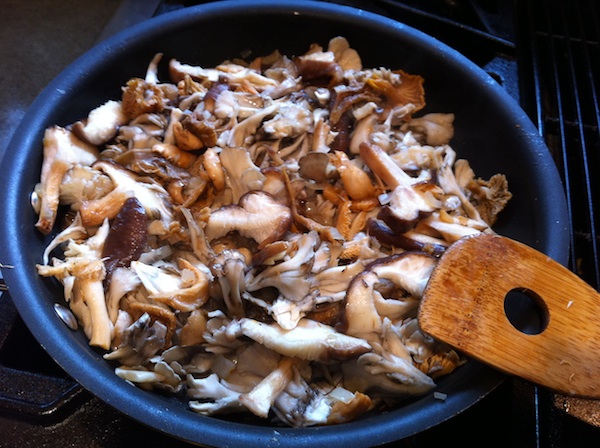
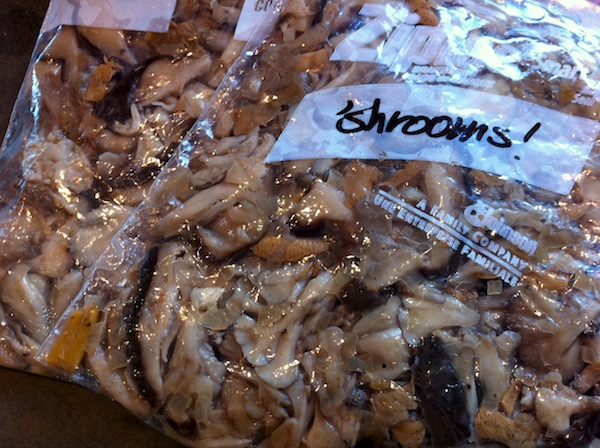 On those nights when it's time for dinner (again???) and ideas are in short supply, I can open the door, survey the stocks, meats and sauces and come away with armloads of inspiration.
On those nights when it's time for dinner (again???) and ideas are in short supply, I can open the door, survey the stocks, meats and sauces and come away with armloads of inspiration.
 This week, a new creature appeared near the pump station. A large moss animal, or Bryozoan, was drifting in water (top photo). A gelatinous mass about the size of a soccer ball, it is known to bryozoologists as Pectinatella magnifica (left, from Wikimedia). It is the largest of the 22 freshwater moss animals found in North America. Most are delicate creatures that go unnoticed by all but a handful of dedicated professionals. Pectinatella is hard to ignore, and brought us back to invertebrate zoology class.
This week, a new creature appeared near the pump station. A large moss animal, or Bryozoan, was drifting in water (top photo). A gelatinous mass about the size of a soccer ball, it is known to bryozoologists as Pectinatella magnifica (left, from Wikimedia). It is the largest of the 22 freshwater moss animals found in North America. Most are delicate creatures that go unnoticed by all but a handful of dedicated professionals. Pectinatella is hard to ignore, and brought us back to invertebrate zoology class.
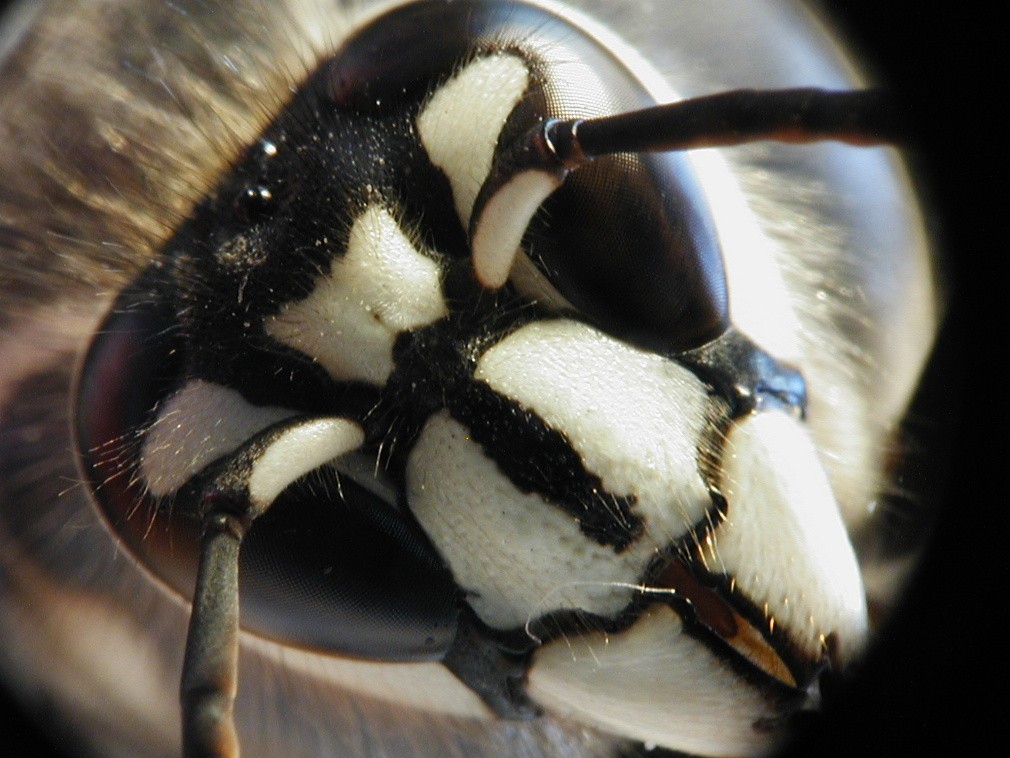 When you stumble across a nest, it is impossible to outrun them, though a hasty departure is required. We have found the trick is to stand absolutely still against the trunk of the biggest tree nearby, and the wasps will circle in an upwards spiral around the tree looking for your head. Soon, they depart. The most likable of the group are the paper wasps who build small, open nests under the eves of buildings. They build nests on our heavy truck, and seem unfazed by the trip to Salem and back two or three times a week. They watch us keenly, but leave us alone as we work around them. The wasps, as a group, use their stinger as a tool to paralyze their prey, and they inflict a more painful and longer lasting injection than honey bees.
When you stumble across a nest, it is impossible to outrun them, though a hasty departure is required. We have found the trick is to stand absolutely still against the trunk of the biggest tree nearby, and the wasps will circle in an upwards spiral around the tree looking for your head. Soon, they depart. The most likable of the group are the paper wasps who build small, open nests under the eves of buildings. They build nests on our heavy truck, and seem unfazed by the trip to Salem and back two or three times a week. They watch us keenly, but leave us alone as we work around them. The wasps, as a group, use their stinger as a tool to paralyze their prey, and they inflict a more painful and longer lasting injection than honey bees.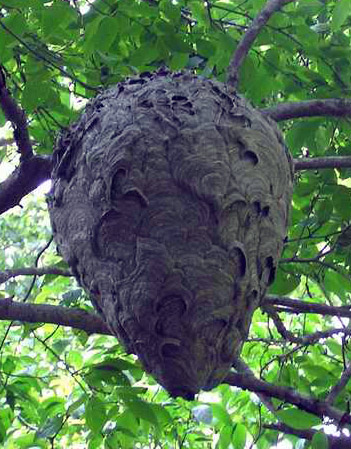 Last week, we found a bald faced hornet nest in a drooping branch of a mirabelle plum tree but a foot above the ground. When we mentioned this to our crew, they noted the locations of a couple of other nests likewise close to the ground. New Englanders have always regarded low wasp nests as a harbinger of a harsh winter, the 'seventh winter' in a cycle. We had a sense of this earlier, and we have planted our sensitive crops in more sheltered locations than in the past, and are hedging with larger plantings of the more hardy greens. Consequently, it was interesting to hear meteorologists predict a colder winter this year for Oregon.
Last week, we found a bald faced hornet nest in a drooping branch of a mirabelle plum tree but a foot above the ground. When we mentioned this to our crew, they noted the locations of a couple of other nests likewise close to the ground. New Englanders have always regarded low wasp nests as a harbinger of a harsh winter, the 'seventh winter' in a cycle. We had a sense of this earlier, and we have planted our sensitive crops in more sheltered locations than in the past, and are hedging with larger plantings of the more hardy greens. Consequently, it was interesting to hear meteorologists predict a colder winter this year for Oregon.

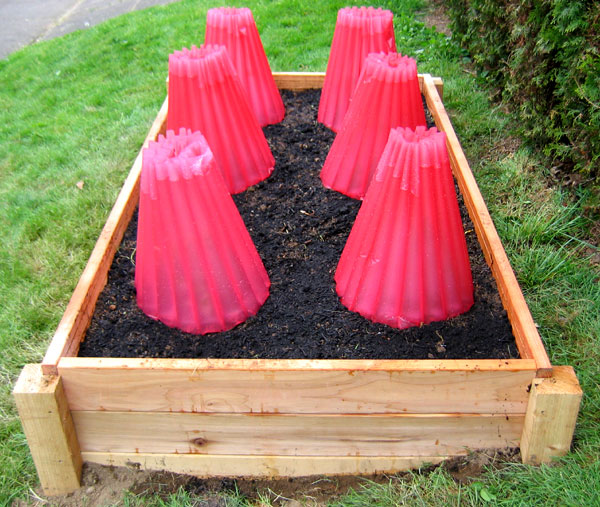 This, of course, necessitated getting out the computer and
This, of course, necessitated getting out the computer and  We had to wait a week or so for the weather and our schedules to clear, then we dug up the lawn, put the frame together and hauled in multiple bags of compost and manure, a solid afternoon of hard work that was rewarded with a very dry martini and toasts to the eventual harvest. The next day I planted two Cherokee Purple tomatoes, a Brandywine, a Green Zebra, a Black Plum cherry and an Isis Candy cherry, then surrounded them with their red Wall O' Water tomato teepees. The bases were scattered with basil and arugula seeds and watered liberally.
We had to wait a week or so for the weather and our schedules to clear, then we dug up the lawn, put the frame together and hauled in multiple bags of compost and manure, a solid afternoon of hard work that was rewarded with a very dry martini and toasts to the eventual harvest. The next day I planted two Cherokee Purple tomatoes, a Brandywine, a Green Zebra, a Black Plum cherry and an Isis Candy cherry, then surrounded them with their red Wall O' Water tomato teepees. The bases were scattered with basil and arugula seeds and watered liberally.